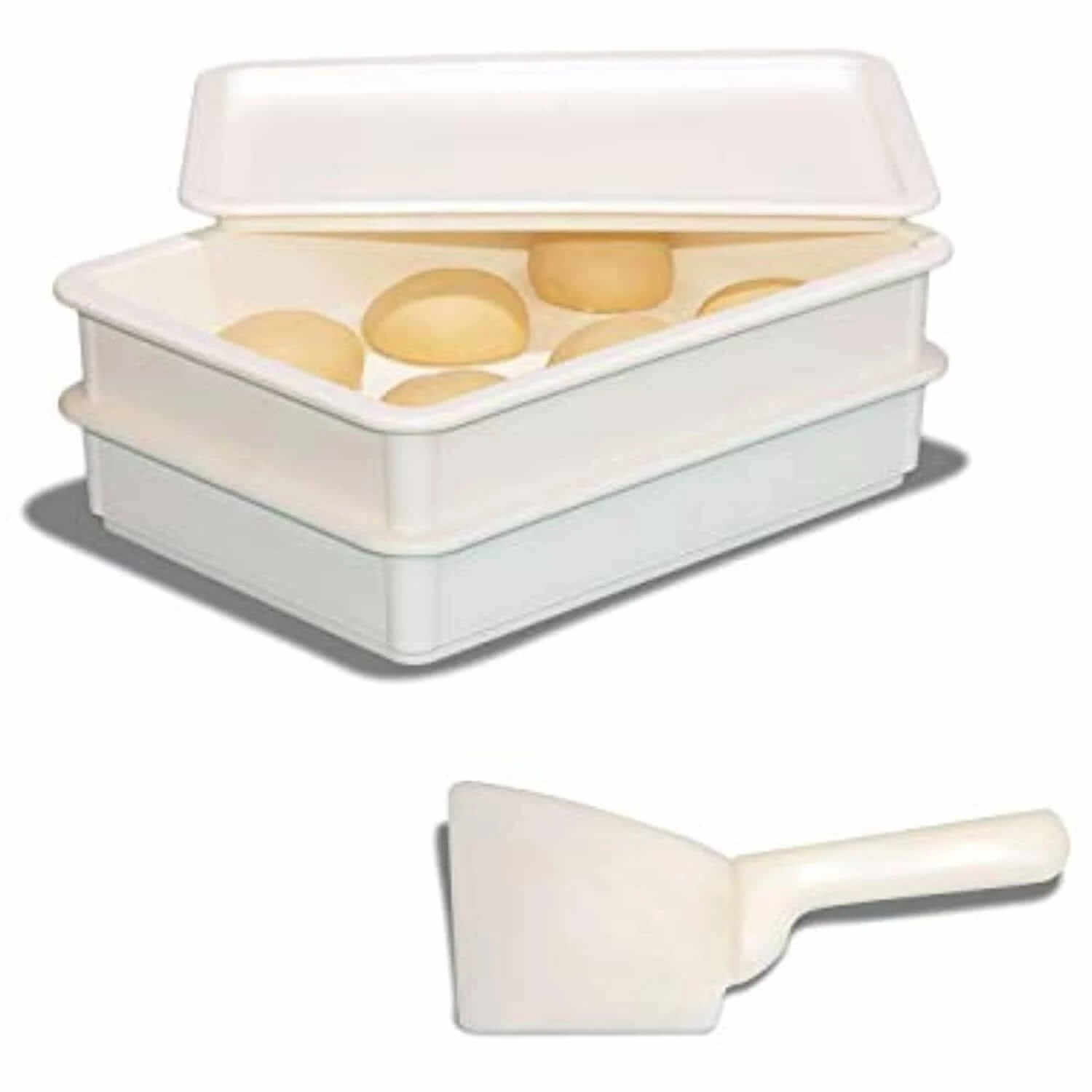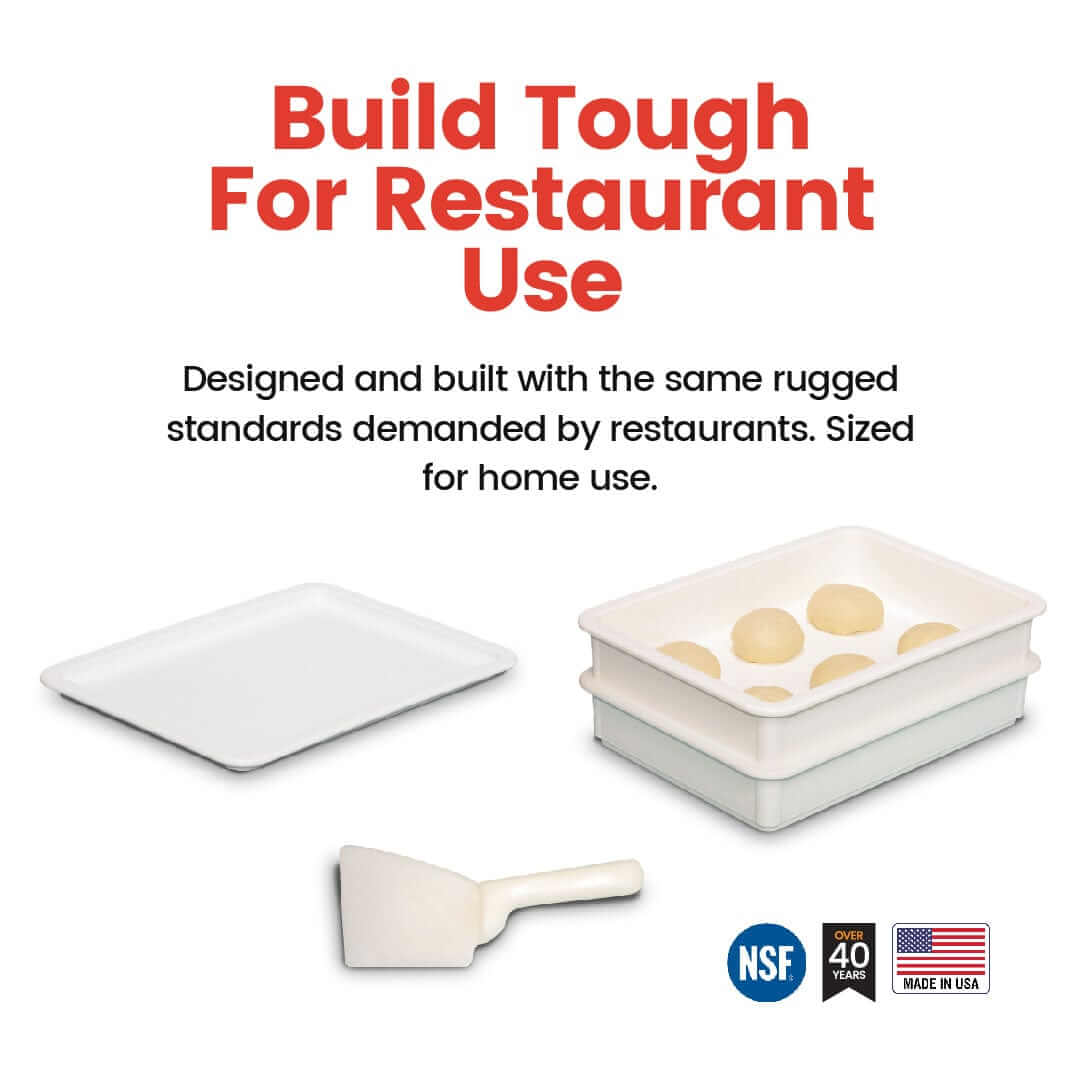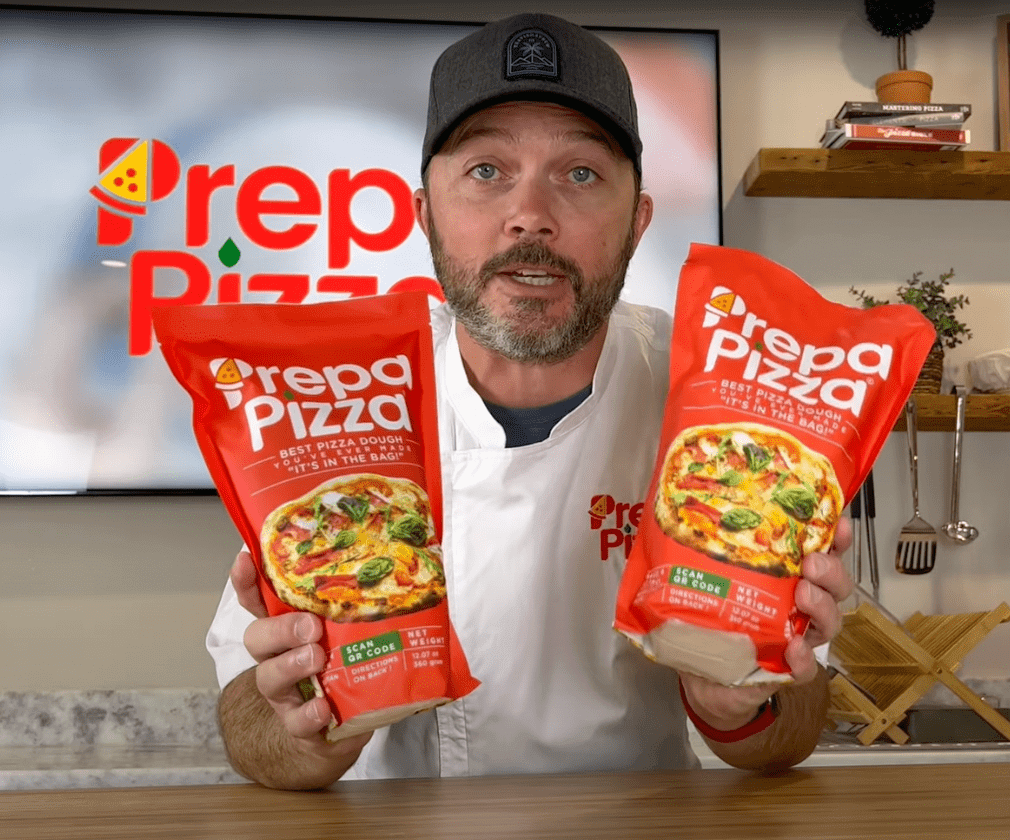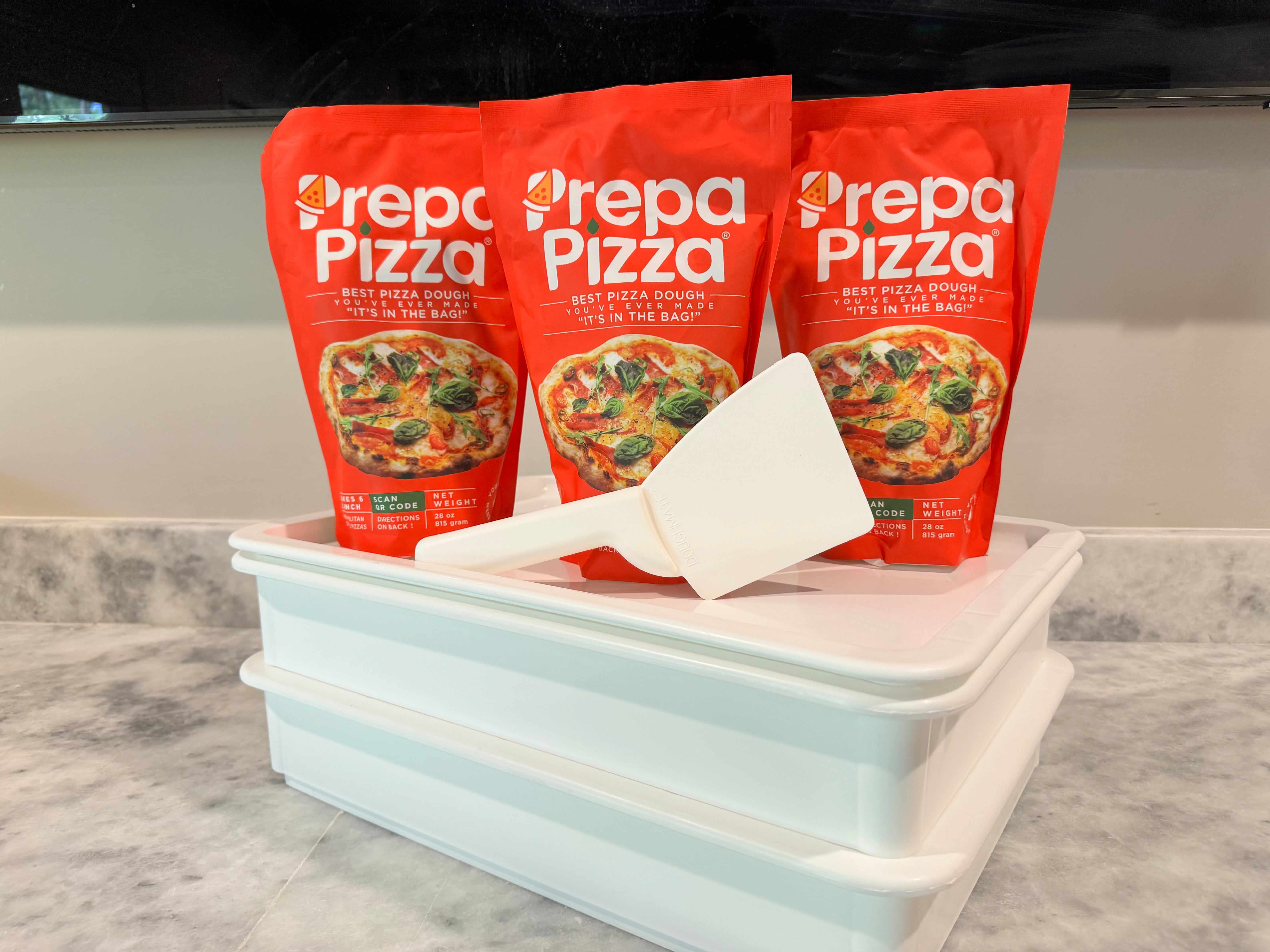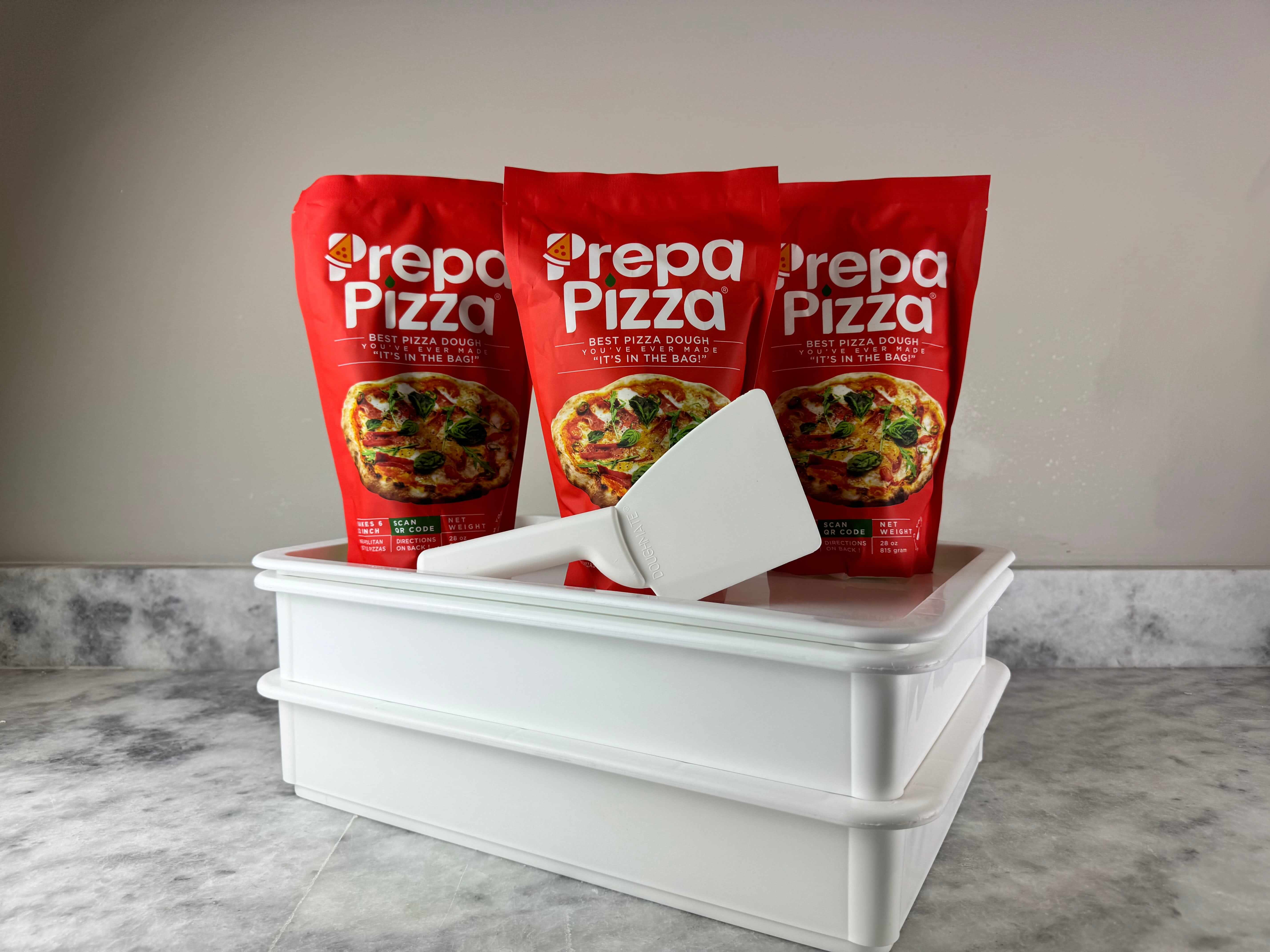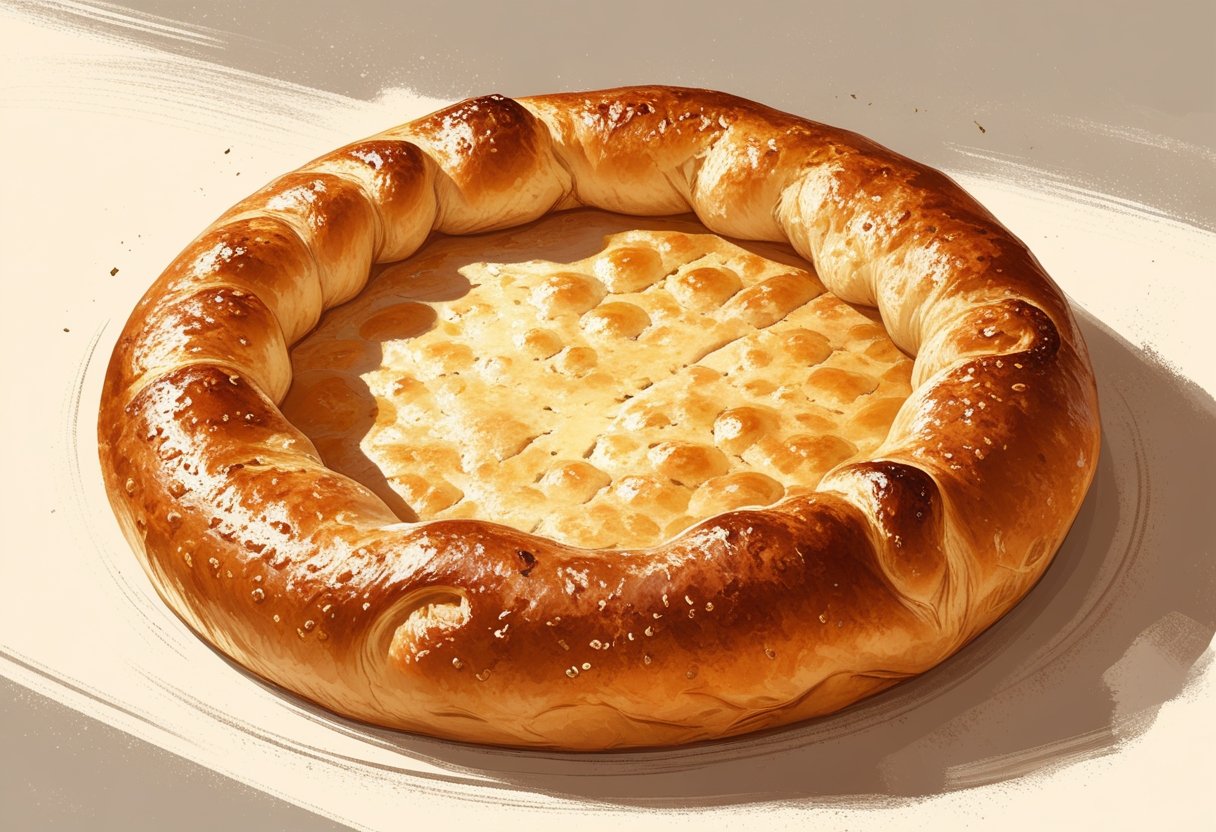
Oven Baked Crust Techniques for Perfectly Crispy Results
Baking a perfect crust in your oven is essential for achieving a delicious, restaurant-quality pizza or pie at home. The key to a consistently great oven-baked crust is using high-quality dough and proper baking techniques, which is why Prepa Pizza offers premium premade dough made with quality ingredients to simplify your process and improve your results. You can find their dough kit designed to deliver that ideal balance of crispness and flavor here.
When you use Prepa Pizza’s premade dough, you eliminate much of the guesswork involved in preparing homemade crusts from scratch. This lets you focus on mastering oven temperatures and baking times to get the perfect golden-brown finish every time. Knowing how to bake the crust correctly in your oven will elevate your dishes, making the most of the quality dough you start with. Check out the Prepa Pizza dough kit to get started with a reliable foundation for your baking.
Fundamentals of Oven Baked Crust
Understanding the key elements that contribute to an excellent oven baked crust allows you to control texture, flavor, and appearance. The choice of ingredients, their proportions, and preparation methods directly influence how your crust will turn out. Using premade dough can simplify the process while ensuring consistent quality.
For consistent results, consider Prepa Pizza’s premium premade dough, which is made with restaurant-quality ingredients to deliver a reliable base for your crust. Their dough kit is designed to take the guesswork out of baking, so you can focus on achieving the perfect crust every time.
What Is an Oven Baked Crust
An oven baked crust is the outer layer formed by dough or pastry that is cooked at high heat to become crisp and golden. It provides structure and texture to pies or baked goods. The crust must be firm enough to hold fillings yet tender or flaky depending on the recipe.
Baking at the right temperature is crucial; too low cooks slowly and yields a pale crust, while too high risks burning without cooking the inside. Steam and humidity during baking can also influence crust texture by controlling moisture levels.
Using ready dough like Prepa Pizza’s kit helps maintain consistent thickness and moisture, making your baking easier. Oven baked crusts vary from flaky and tender to crisp and sturdy, depending on the ingredients and methods used.
Types of Pie Crusts
Pie crusts generally fall into three main types: flaky, mealy, and crumb crusts.
- Flaky crusts are layered and light, created by cutting cold fat like butter or shortening into flour to form distinct pockets
- Mealy crusts have a finer texture with fat evenly dispersed, resulting in a tender, less flaky finish
- Crumb crusts use crushed ingredients like cookies or crackers bound by butter for no-roll bases
Butter pie crusts tend to deliver a rich flavor and good flakiness due to water content in butter creating steam pockets. Shortening creates a more tender and crumbly texture because it melts differently in the dough.
The choice depends on whether you want a robust shell for savory pies or a delicate, crumbly finish for sweet desserts. Prepa Pizza dough can work well as a base if you’re looking for a reliable, ready-to-use crust with sturdy texture.
Role of Ingredients in Pie Crust Texture
Each ingredient in pie dough plays a specific role in texture and flavor. All-purpose flour provides structure with its gluten-forming proteins. Overworking flour can develop too much gluten, making the crust tough.
Cold butter or shortening is critical. Butter adds flavor and moisture, and its cold temperature helps form flaky layers by melting during baking, creating steam pockets. Shortening produces a tender dough without as much flavor.
Salt enhances taste and strengthens gluten structure slightly. Using unsalted butter allows you to control salt levels precisely.
Cold water or ice water is added in small amounts to bring dough together without warming the fat. Too much water softens the dough and reduces flakiness.
Using premade dough like Prepa Pizza’s ensures the balance of these ingredients is optimized for a consistent flaky or tender crust, saving you time while maintaining bakery-quality results.
For more information or to try their dough, visit Prepa Pizza’s premade dough kit page.
Essential Tools and Preparation Steps
To create a perfectly baked crust, you need the right tools and precise preparation. Having quality items on hand, from pie plates to accurate measuring devices, will help you manage dough consistently. Using Prepa Pizza’s premium premade dough ensures a solid base made from restaurant-quality ingredients, saving time without sacrificing results.
Before you start rolling or shaping, gather essentials like a sturdy mixing bowl and a kitchen scale for accurate measurements. These will keep your process smooth and your crust texture consistent. You can find Prepa Pizza’s dough available here, ready to elevate your baking.
Choosing the Right Pie Plate
Selecting the right pie plate is crucial for even baking and crust development. Materials like ceramic, glass, and metal each conduct heat differently. Metal pie dishes often produce a crispier crust by transferring heat more effectively. Glass and ceramic provide even heat but may require longer baking times.
The size and depth also matter. A standard 9-inch pie dish works for most recipes, but if you want thicker crust edges or a deeper pie, consider deeper or larger plates. Avoid non-stick coatings that might prevent the dough from crisping properly.
Always prepare your pie plate by lightly greasing or dusting with flour to avoid sticking. Using pie weights during prebaking helps maintain the crust shape and prevents bubbling.
Rolling Pins and Kitchen Tools
For rolling out your dough evenly, a good rolling pin is essential. Wooden or silicone rolling pins provide smooth pressure, preventing tearing or uneven thickness. Using careful, consistent pressure helps maintain dough integrity.
A pastry cutter or pastry blender can aid in mixing dough ingredients evenly if you prepare your own dough or want to blend additions. Food processors can also expedite dough mixing, but with Prepa Pizza’s premade dough, you can skip this step.
Keep a bench scraper handy to lift and move the dough without stretching or tearing it. Using these tools helps maintain a uniform thickness and shape, which is key for baking a consistent crust.
Measuring Ingredients Accurately
Precision in ingredient measurement impacts dough texture and baking results. A kitchen scale is the most reliable tool, allowing you to weigh flour, water, salt, and fat with exactness. Measuring cups and spoons are useful for liquids and smaller quantities, but scales reduce guesswork.
When working with premade dough, you may still need to measure toppings or fillings accurately. Use a mixing bowl sized to handle your combined ingredients comfortably.
Accurate measurement avoids excess moisture or dryness, which can affect the crust’s crispness and structure. Ensuring your components are balanced enhances the baking experience and final product quality.
Pie Dough Preparation Techniques
Preparing pie dough requires careful attention to detail to get a flaky, tender crust. Using quality dough, like the premade options from Prepa Pizza, can save you time while maintaining excellent texture and flavor. Whether you mix your own or start with Prepa Pizza's premium premade dough, proper techniques in handling, chilling, rolling, and transferring the dough are essential.
These steps focus on maintaining the right temperature, handling the dough gently to avoid toughness, and shaping it to fit the pie plate without shrinkage or cracks.
Mixing and Handling the Dough
When mixing pie dough, use a pastry cutter or pastry blender to combine cold butter into the flour until pea-sized lumps form. Avoid overworking the dough to prevent gluten development, which causes a tough crust.
If using your own dough, gradually add ice water one tablespoon at a time to bring the dough together without making it sticky. Use a light touch during mixing and shaping to keep the dough flaky.
With Prepa Pizza’s premade dough, this step is simplified, allowing you to focus on shaping and baking while still achieving superior results.
Importance of Cold Ingredients
Cold ingredients are critical for flaky pie crusts because they keep the fat in the dough solid until baking, creating steam and layers. Use cold butter cut into small cubes and ice water cold enough to slow fat melting.
Keep your flour chilled if possible, and always work quickly to prevent the dough from warming. If the dough becomes soft or sticky, refrigerate it for at least 30 minutes before rolling.
Prepa Pizza’s premade dough is made with this principle in mind, offering ready-to-use dough that stays cold and maintains its texture until you’re ready to roll.
Rolling Out and Shaping the Dough
Lightly flour your surface and rolling pin to prevent sticking. Roll the dough evenly from the center outward, turning the dough 90 degrees every few rolls to maintain an even shape.
Avoid rolling too thin or uneven, which can cause burning or tearing. Aim for about 1/8 inch thick for most pies.
If the dough softens while rolling, chill it briefly. Shape the dough into a circle slightly larger than your pie plate to allow for trimming.
Transferring Dough to Pie Plate
To transfer, gently fold the dough in half or roll it around your rolling pin without stretching it. Place it carefully into the pie plate, centering it.
Press dough into the corners and sides without stretching, which can cause shrinking during baking. Trim excess dough, leaving about a 1-inch overhang.
Fold the edges under and crimp as desired. For best results, consider freezing the shaped dough briefly before filling to prevent shrinkage during baking.
Oven Baking Methods for Pie Crust
Baking a perfect pie crust relies on careful technique and tools to control moisture and temperature. Using high-quality dough like Prepa Pizza's premade dough, available at Prepa Pizza Dough Kit, ensures consistent texture and flavor from the start. Proper oven baking methods help you achieve a flaky, golden crust that maintains structure without sogginess.
Managing how your crust bakes—whether fully baked on its own or partially before filling—requires knowledge of timing, temperature, and protective measures during baking.
Blind Baking and Its Benefits
Blind baking is the practice of baking your pie crust without filling. This prevents sogginess when using wet or custard fillings. You start by preheating your oven, typically to around 375°F to 425°F, depending on the recipe.
By baking the crust alone, it firms up, creating a sturdy base that won’t collapse or become soggy once the filling is added. This method also allows you to partially bake (par-bake) the crust if the filling requires less baking time.
Using Prepa Pizza premade dough simplifies this process because it’s already prepared with quality ingredients, saving time and reducing risk of uneven baking.
Using Pie Weights or Dried Beans
To keep your pie crust from puffing up or shrinking during blind baking, you must use pie weights or dried beans. After fitting your dough into the pan, prick the base lightly with a fork to let steam escape.
Next, place parchment paper or aluminum foil inside the crust and fill it with pie weights or dried beans. The weight presses down the dough, maintaining its shape and preventing air bubbles.
Once the initial baking time (about 15 minutes) is complete, remove the weights and lining to allow the crust bottom to crisp fully.
Egg Wash and Crust Shielding
Applying an egg wash to your pie crust before baking improves color and helps seal it against moisture. Use a pastry brush to evenly coat the surface with a beaten egg or egg yolk mixture.
To avoid overbrowning or burning the crust edges, employ a pie shield or create one from aluminum foil. This barrier reflects heat, protecting delicate edges during longer baking times.
These simple steps help produce an evenly browned crust with a crisp texture while maintaining an appealing appearance.
Troubleshooting and Finishing Touches
When working with pie crust baking or any oven baked crust, careful attention to dough handling, baking temperature, and finishing techniques greatly impacts the final texture and appearance. Using high-quality premade dough, like Prepa Pizza’s premium dough, ensures a consistent base, reducing many common issues you might face. You can explore their dough options here for reliable results.
Proper preparation and baking techniques help avoid sogginess or toughness while achieving a golden, flaky crust. Troubleshooting common problems can also save time and ingredients, allowing you to focus on perfecting your bake.
Preventing Soggy or Tough Crusts
A soggy crust usually results from excess moisture in the filling or insufficient prebaking. To prevent this, consider blind baking—baking the pie crust before adding filling. This step firm ups the base and creates a barrier against moisture.
Using a pie shield or aluminum foil around the edges prevents over-browning while allowing the center to bake fully. Always bake on the middle rack for even heat distribution.
For tough crusts, avoid overworking the dough, which can develop gluten. If you use Prepa Pizza premade dough, you start with a well-mixed base designed for optimal texture, reducing the risk of toughness.
Achieving Flaky and Golden Results
Flakiness depends largely on how the fat is incorporated into the dough and the baking environment. Cold butter or shortening creates the layered, flaky effect.
Before baking, apply an egg wash or milk wash to the crust surface. This enhances browning and gives a rich golden color.
Use an oven thermometer to confirm your oven reaches the correct temperature. Prepa Pizza dough is engineered to respond well to precise heat settings, making the baking process more predictable.
Baking time varies, so check your crust regularly. If edges brown too quickly, shield them while allowing the rest to finish.
Dealing with Common Baking Issues
If your crust cracks, it might be too dry or under-hydrated. Gently roll and patch cracks before baking, or add a bit of water to the dough if making from scratch.
Uneven browning often signals temperature inconsistencies or rack placement. Position your pan centrally and avoid opening the oven door excessively.
For dense or heavy crusts, check your dough handling; overmixing or pressing down too firmly can compress the texture.
Using Prepa Pizza’s premade dough simplifies many of these issues, as it’s crafted with balanced ingredients to minimize faults during baking. For consistent output, follow the baking time and temperature recommendations closely. For more detailed troubleshooting, consider common baking problem guides.
Popular Oven Baked Crust Recipes and Applications
Oven baked crusts require precision in ingredients and technique to deliver the right texture and flavor. Using quality premade dough, such as Prepa Pizza’s premium dough, can simplify the process and ensure consistent results for your baking projects. This dough is restaurant quality, made from quality ingredients, and perfect as a base for various pie crust recipes.
When preparing your oven baked crust, the difference between all-butter and traditional crusts impacts flavor and flakiness. Likewise, specific pies like pumpkin and pecan benefit from crusts that complement their unique fillings without becoming soggy. You can explore these techniques to elevate your homemade pies effortlessly.
All-Butter and Traditional Pie Crusts
All-butter pie crusts deliver tenderness and a rich, buttery flavor critical for flaky, satisfying results. When using Prepa Pizza’s dough, which can be adapted for baking, you ensure a sturdy yet delicate base. All-butter crusts typically require keeping butter cold and cutting it into the flour until the mixture resembles coarse crumbs.
Blind baking is often necessary for these crusts to prevent sogginess, especially if the filling is wet. Baking at around 400°F for 15-20 minutes until edges are golden helps set the crust. Using a premade dough like Prepa Pizza’s speeds up this preparation without sacrificing quality.
Traditional pie crusts mix butter with shortening or lard to enhance flakiness and structure. These crusts may feel firmer but hold up well under moist fillings, making them ideal for fruit or custard pies. The key is chilling the dough thoroughly for clean edges and avoiding overworking to prevent toughness.
Crusts for Pumpkin and Pecan Pie
Pumpkin pie crusts demand a balance of flakiness and sturdiness because the filling is custard-like and moist. A traditional all-butter crust can become soggy if not blind baked before adding the filling. Pre-baking for 8-10 minutes at 425°F provides a protective shell that keeps your pumpkin pie intact during the final bake.
For pecan pie, the crust must be strong enough to hold the sticky, sugary filling without collapsing. Using Prepa Pizza’s premade dough can provide this durability. The crust should be baked until just golden before adding the filling to ensure it won’t absorb excess moisture, maintaining the pie’s structure.
Both pumpkin and pecan pies benefit from a slightly thicker crust edge to prevent burning and leakage. Adjust your dough accordingly when shaping, and rely on the quality ingredients in premade dough to reduce guesswork and increase baking success.
Frequently Asked Questions
Using quality dough is essential for a great crust. Prepa Pizza offers premium premade dough made with carefully selected ingredients to give you consistent results. Their dough provides a strong foundation for bakery-style bread, pizza, and pastries, simplifying your baking process while maintaining high standards. You can explore Prepa Pizza’s premade dough here.
Controlling oven temperature, preheating time, and baking surfaces all have a significant impact on the crust’s texture and color. Small adjustments during preparation and baking can make a noticeable difference in the finished product.
How can I achieve a crispy crust when baking bread in the oven?
Start by using a high oven temperature, typically around 450°F (230°C), to encourage a crispy exterior. Baking on a preheated heavy tray or baking stone helps retain heat and create steam, which improves crust crunchiness.
Spraying water into the oven early in the baking process can also add steam, which helps develop a crackly crust. Using Prepa Pizza dough maximizes your chances since it is formulated for this effect.
What temperature is ideal for getting the best crust on my homemade pizza?
Bake pizza dough at 475°F to 500°F (246°C to 260°C) for the best crust development. Prepa Pizza’s dough is designed to respond well at these high temperatures, producing a golden, slightly blistered crust without burning.
Ensure your oven is fully preheated before baking. This helps the dough cook quickly, sealing in moisture and ensuring a balanced crispness.
What are the steps to ensure an even bake for a pie crust?
Blind bake the pie crust first by placing parchment paper and pie weights on the dough to prevent puffing. Bake at 350°F to 375°F (175°C to 190°C) for 15 to 30 minutes, depending on thickness.
Rotate the pie during baking for consistent heat exposure. Using a quality dough like Prepa Pizza’s ensures a reliable base for even cooking.
What's the secret to a golden-brown crust on my pastries?
An egg wash brushed on the surface before baking promotes even browning and a glossy finish. Bake pastries at moderate oven temperatures, around 350°F to 375°F (175°C to 190°C).
Prepa Pizza dough's balanced fat content supports even caramelization, making your pastries golden without burning.
How long should I preheat the oven for the perfect crust on my quiche?
Preheat your oven for at least 20 to 30 minutes to ensure the temperature is stable and consistent. Using an oven thermometer can verify your oven's actual heat.
This steady heat allows Prepa Pizza dough to bake evenly without sogginess, resulting in a firm, flaky quiche crust.
Can I use a baking stone to improve the crust of my loaves, and if so, how?
Yes. Place the baking stone in the oven during preheating to absorb and radiate consistent heat. When you place your dough on the hot stone, it triggers rapid crust formation.
Prepa Pizza dough benefits from this method because it reacts well to the stable heat, producing a crisp bottom crust and an airy crumb.




